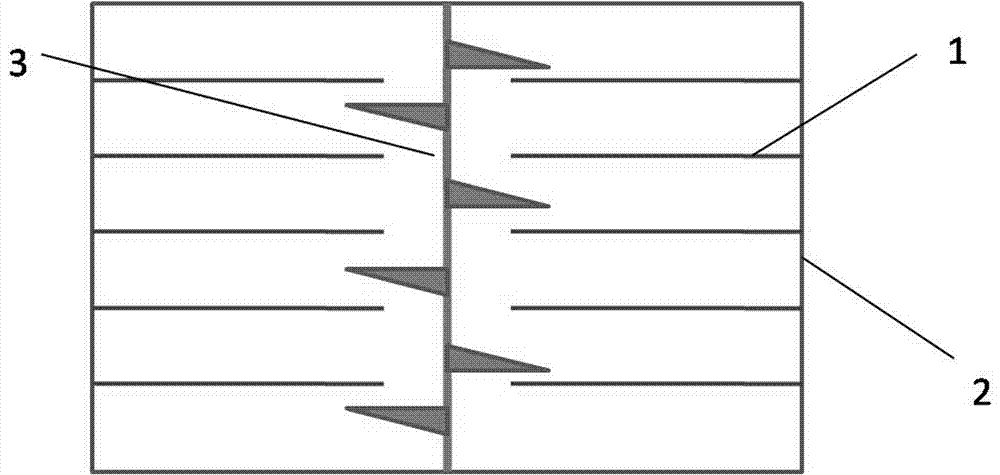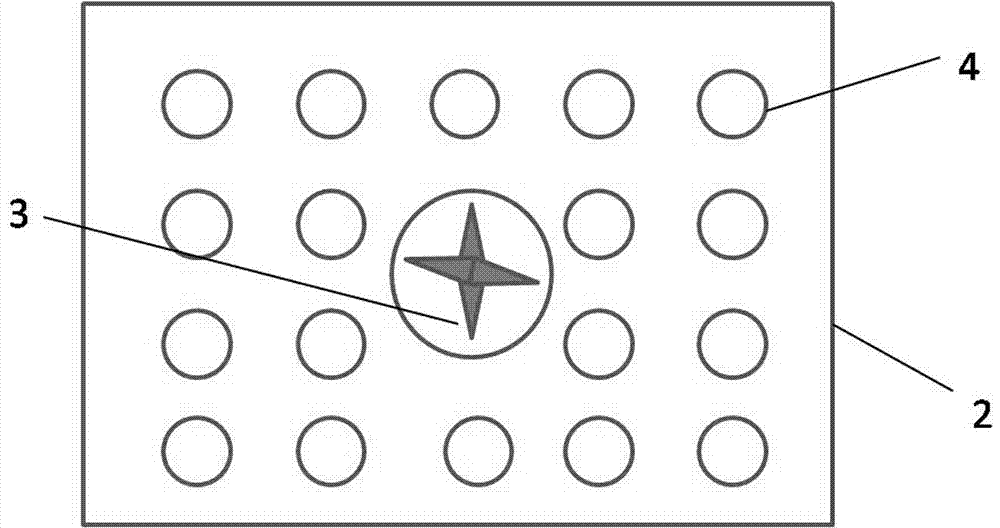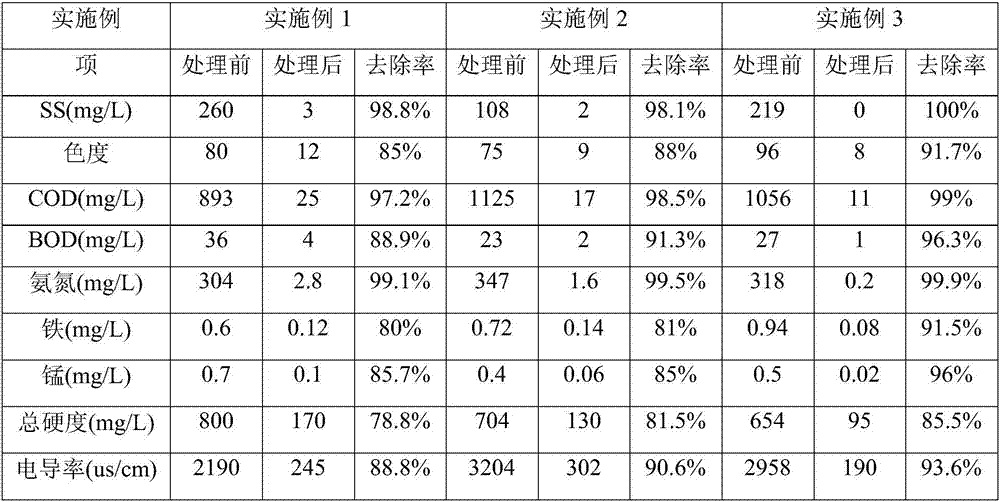Printing and dyeing wastewater deep treatment method
A printing and dyeing wastewater and advanced treatment technology, which is applied in energy wastewater treatment, textile industry wastewater treatment, water/sewage treatment, etc., can solve the problems of increasing drinking water treatment costs, allergies, tissue changes, and mutagenicity, etc., to facilitate recycling , easy to separate, increase the effect of adsorption capacity
- Summary
- Abstract
- Description
- Claims
- Application Information
AI Technical Summary
Problems solved by technology
Method used
Image
Examples
Embodiment 1
[0031] A method for advanced treatment of printing and dyeing wastewater, the method comprising the following steps:
[0032] Step 1. Media filtration: Media filtration is performed on the discharge water after the printing and dyeing wastewater has been treated by the combined process of coagulation sedimentation, anaerobic hydrolysis and activated sludge aeration. Quartz sand, activated carbon or fly ash is used as the filter media filter, and the media particles Particle size 0.8~1.2mm, backwash cycle 1~7d;
[0033] Step 2. Adsorption of magnetic hydrogel microspheres: the effluent after medium filtration is passed into the adsorption reaction tank, and 0.1kg of magnetic hydrogel microspheres are put in per ton of water, and the adsorption rate is controlled by the effect of an external magnetic field. After the adsorption is completed , separating and recovering the magnetic hydrogel microspheres;
[0034] Step 3, photocatalytic reaction: the printing and dyeing wastewate...
Embodiment 2
[0043] A method for advanced treatment of printing and dyeing wastewater, the method comprising the following steps:
[0044] Step 1. Media filtration: Media filtration is performed on the discharge water after the printing and dyeing wastewater has been treated by the combined process of coagulation sedimentation, anaerobic hydrolysis and activated sludge aeration. Quartz sand, activated carbon or fly ash is used as the filter media filter, and the media particles Particle size 0.8~1.2mm, backwash cycle 1~7d;
[0045] Step 2. Adsorption of magnetic hydrogel microspheres: the effluent after medium filtration is passed into the adsorption reaction tank, and 0.15kg of magnetic hydrogel microspheres are put in per ton of water, and the adsorption rate is controlled by the effect of an external magnetic field. After the adsorption is completed , separating and recovering the magnetic hydrogel microspheres;
[0046] Step 3, photocatalytic reaction: the printing and dyeing wastewat...
Embodiment 3
[0055] A method for advanced treatment of printing and dyeing wastewater, the method comprising the following steps:
[0056] Step 1. Media filtration: Media filtration is performed on the discharge water after the printing and dyeing wastewater has been treated by the combined process of coagulation sedimentation, anaerobic hydrolysis and activated sludge aeration. Quartz sand, activated carbon or fly ash is used as the filter media filter, and the media particles Particle size 0.8~1.2mm, backwash cycle 1~7d;
[0057] Step 2. Adsorption of magnetic hydrogel microspheres: the effluent after medium filtration is passed into the adsorption reaction tank, and 0.2kg of magnetic hydrogel microspheres are put in per ton of water, and the adsorption rate is controlled by the effect of an external magnetic field. After the adsorption is completed , separating and recovering the magnetic hydrogel microspheres;
[0058] Step 3, photocatalytic reaction: the printing and dyeing wastewate...
PUM
 Login to View More
Login to View More Abstract
Description
Claims
Application Information
 Login to View More
Login to View More - R&D
- Intellectual Property
- Life Sciences
- Materials
- Tech Scout
- Unparalleled Data Quality
- Higher Quality Content
- 60% Fewer Hallucinations
Browse by: Latest US Patents, China's latest patents, Technical Efficacy Thesaurus, Application Domain, Technology Topic, Popular Technical Reports.
© 2025 PatSnap. All rights reserved.Legal|Privacy policy|Modern Slavery Act Transparency Statement|Sitemap|About US| Contact US: help@patsnap.com



